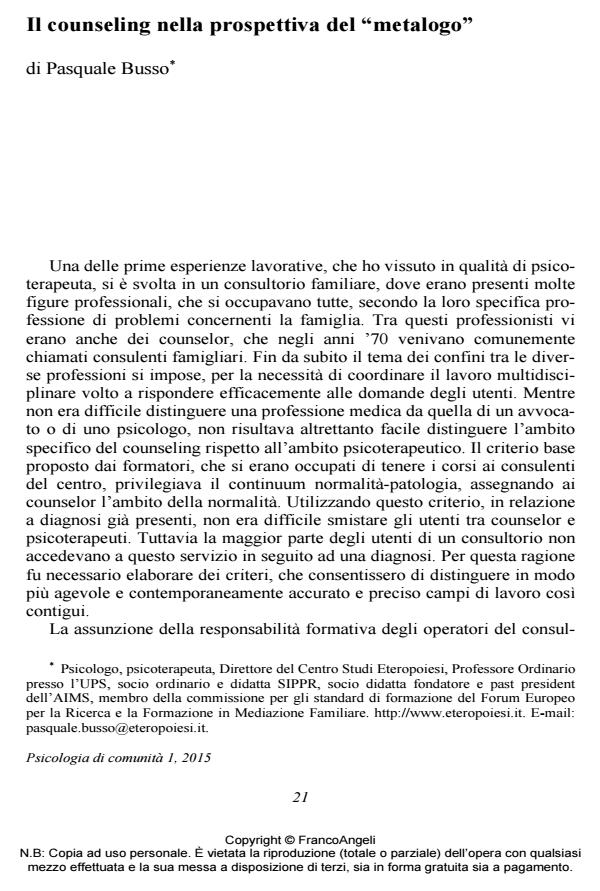Counseling in the perspective of the "metalogue"
Journal title PSICOLOGIA DI COMUNITA’
Author/s Pasquale Busso
Publishing Year 2015 Issue 2015/1
Language Italian Pages 10 P. 21-30 File size 40 KB
DOI 10.3280/PSC2015-001003
DOI is like a bar code for intellectual property: to have more infomation
click here
Below, you can see the article first page
If you want to buy this article in PDF format, you can do it, following the instructions to buy download credits

FrancoAngeli is member of Publishers International Linking Association, Inc (PILA), a not-for-profit association which run the CrossRef service enabling links to and from online scholarly content.
In this article the author introduces a methodology that helps counselors understand the recognition process of the mutual roles professional and client co-build during the whole process of counseling. Starting from the analysis of a metalogue by Bateson, the article illustrates how to conduct an asymmetrical conversation, in which the client asks for help to find an answer to a personal problem. In this way, the definition of counseling enriches itself, because it values both the asymmetry of the roles and the complementarity of the parties towards the Language that speaks through them. The analysis of a case illustrates this methodology.
Keywords: Otherness, counselor, dialogue, metalogue, setting, recognition
Pasquale Busso, Il counseling nella prospettiva del "metalogo" in "PSICOLOGIA DI COMUNITA’" 1/2015, pp 21-30, DOI: 10.3280/PSC2015-001003